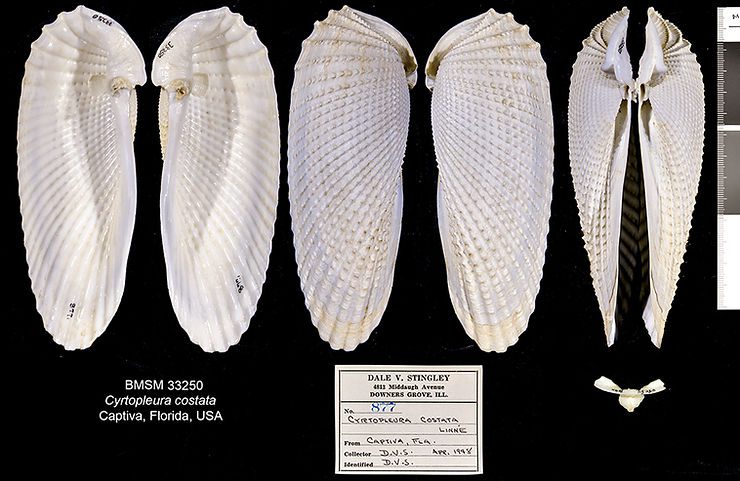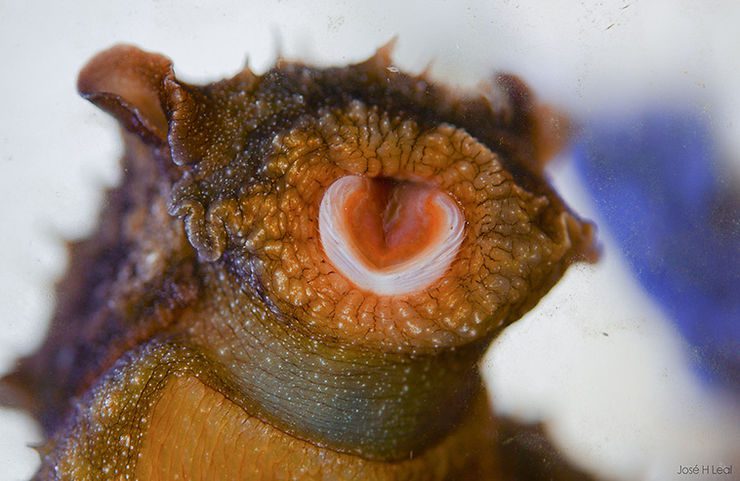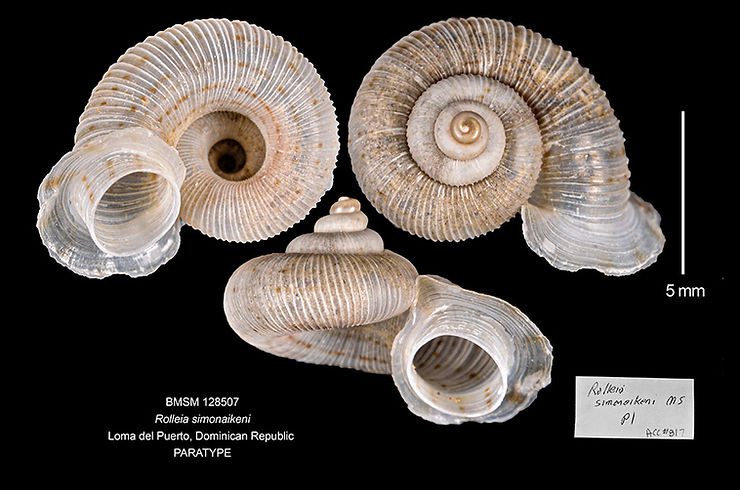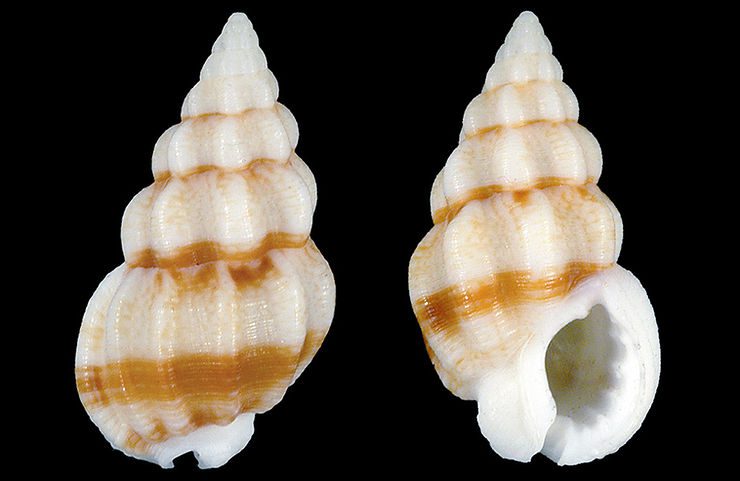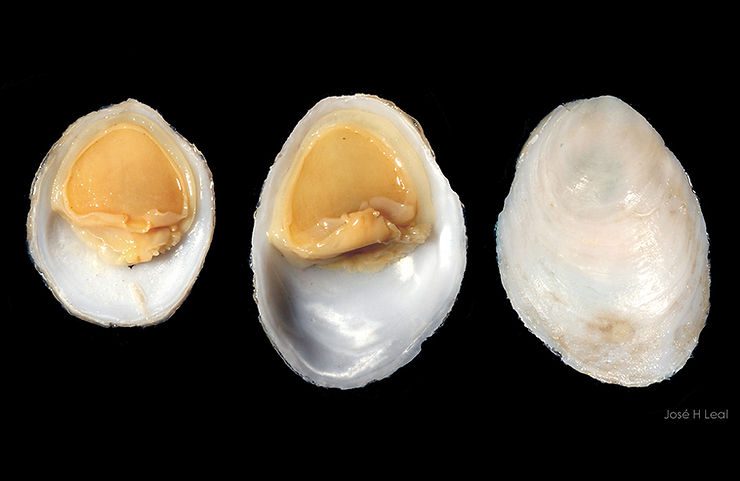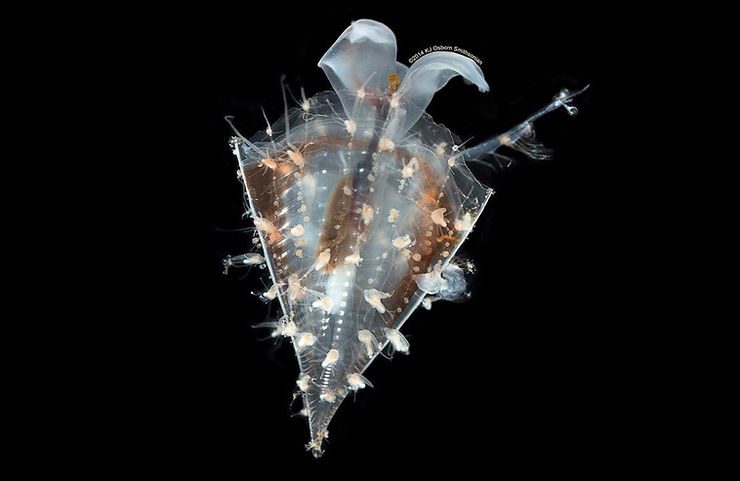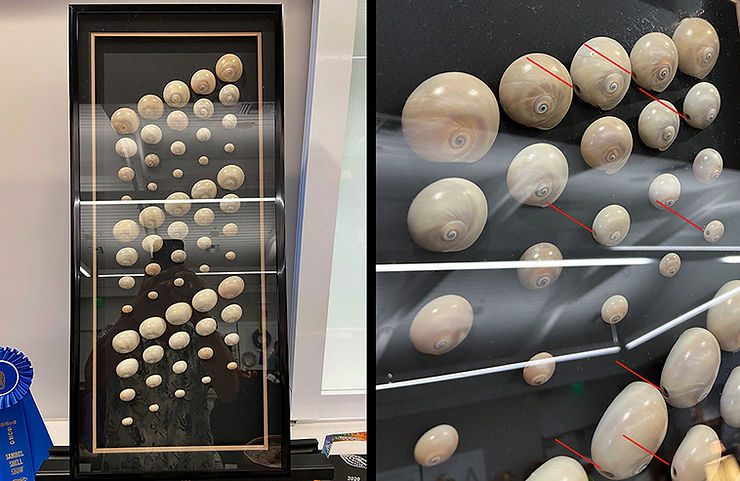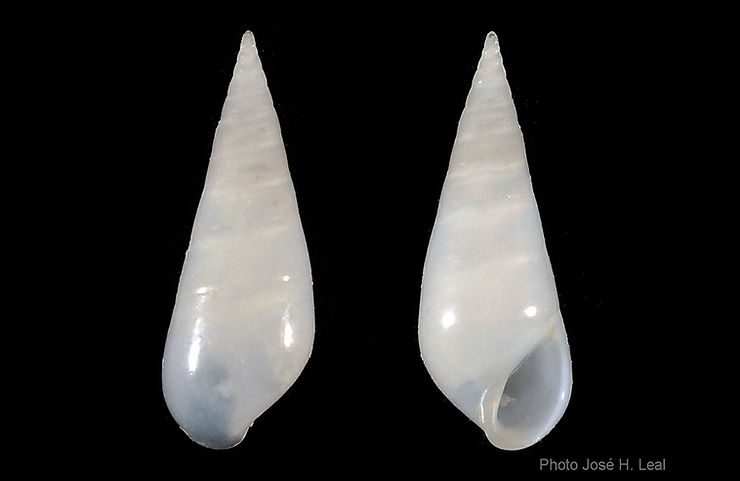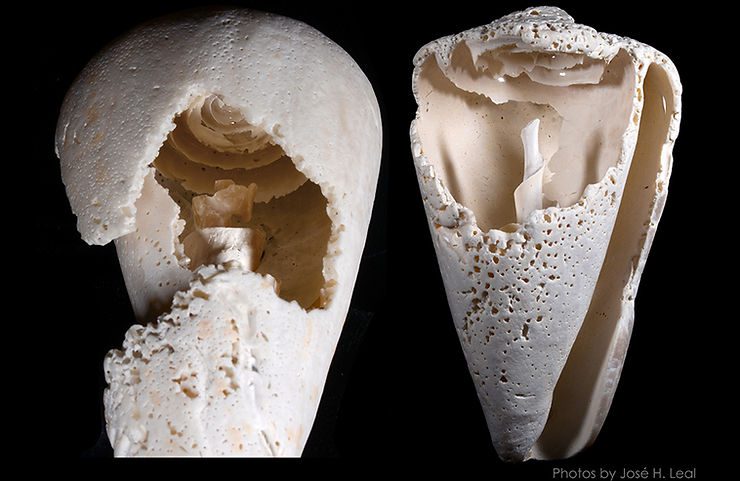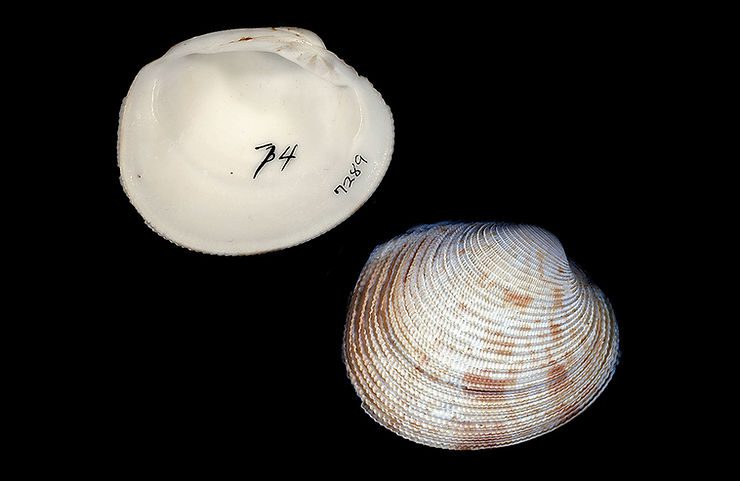
Shell of the Week: The Princess Venus
Periglypta listeri (J.E. Gray, 1838) is another member of the diverse venus clam family, the Veneridae (which includes the Southern Quahog, Cross-barred Venus, Sunray Venus, and many other local species). The Princess Venus grows to about 65 mm (about 2.5 inches), and differs from other local venus clams by the sharply truncated posterior margin (on left of images), which gives a quadrangular aspect to the shell. The sculpture is vaguely similar to that of the Lady-in-waiting Venus (Chionopsis i
